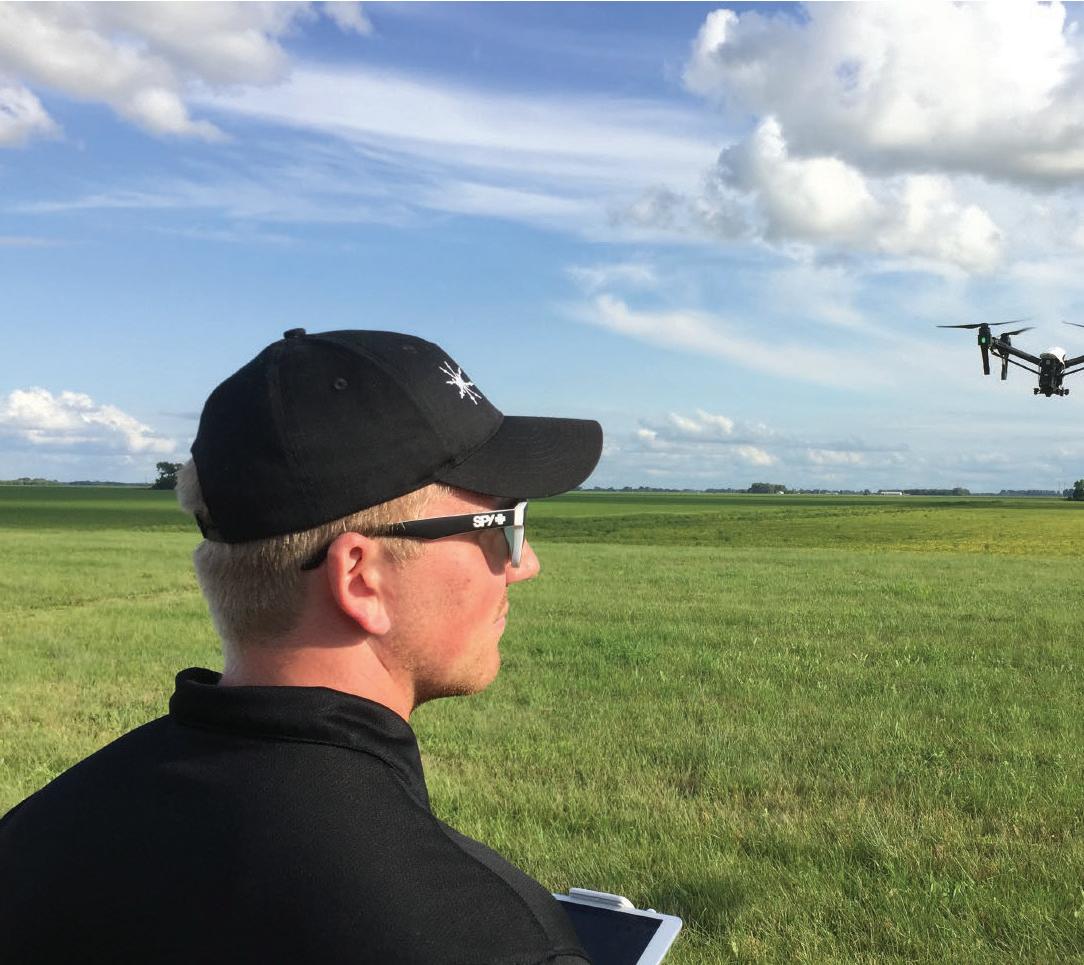
6 minute read
OPERATIONS
Confronting Challenges Impacting Drones and the Air Mobility Market
Autonomous drone flights enable scalability while reducing operating costs and lowering the environmental footprint

By Shay Levy
For many years experts have predicted that futuristic technologies will disrupt the status quo and reshape our daily lives
and society. One day we may all have flying cars just like George Jetson.
The mass adoption of drone deliveries has been cast in a similar light – an obtainable objective, but not realistic in the present.
But that is not actually the case.
Certainly last-mile drone deliveries could be further along, but the drone industry is making massive strides toward nationwide adoption. Walmart recently announced it would expand its last-mile drone delivery network to potentially reach four million American households, across six states, by the end of 2022. Papa John's Pizza says some Americans could see their pies delivered not by a driver with the magnetic advertising cone on the top of their car, but by a drone.
There are no shortages of challenges impacting the drone industry today, but there are also plenty of actionable solutions – and a realistic timeline for when we begin truly utilizing airspace as a limitless resource and start delivering goods to doorsteps.
Solving the Scalability Question
Transporting products from one destination to another via drone creates a brand new, previously untapped market seg-


PHOTOS: FLIGHTOPS
ment virtually overnight. Yes, there are weight and size limitations when it comes to drones, but limitations exist in all forms of transportation and logistics. Only so many roads can be paved, railroad tracks can be laid, and shipping lanes available.
However, the opportunity to transport an item in unrestricted airspace creates limitless possibilities. Airspace is an under-used resource which creates a prime opportunity for companies to rethink their business processes and product deliverability. The good news is the technology is already available, too. Previously, controlling a drone meant a human operating the machinery would oversee the drone’s takeoff, flight path and landing. A one-drone-to-one-person ratio is not scalable, however – and that is where the existing technology comes in. In the same way that DOS and Windows disrupted the PC industry by shifting the focus from the hardware to the business process it serves, the FlightOps cloud-based operating system is revolutionizing the drone industry by connecting an ever-growing variety of commercial platforms and hardware to real-life business applications that allow convenient, safe and scalable mobility. An automated flight process reduces the dependency on drone pilots to zero and dramatically increases safety. The OS (Operating System) software converts any
UAV (unmanned aerial vehicles) into a smart, cloud-connected robot with massive scalability. The introduction of predetermined flight plans leads to scalable solutions and onboard autonomy.
Because this operating system is the “Android” of drones, its easy installation onto drone hardware can turn essentially any drone into a UAV. This technological breakthrough is not only disruptive, but it reinvents how goods can be transported safely and reimages the air mobility market landscape.
Previously, it was not economical for a business to invest heavily in non-scalable drone transportation. A coffee company investing millions of dollars into delivering caffeinated beverages by drone is burning money if a franchise location only had one human controlling one drone. But with unmanned aircraft scalability, suddenly that latte could be delivered on the same street as the espresso doppio that was delivered a minute earlier, and so on.
How Automated Drones Operate
The OS solution works by installing robotic software onboard drones of any type, which then converts them into autonomous “robot pilots.” The drones then communicate with a cloud-based operation center through 5G networks allowing for an automated fleet in a shared airspace from anywhere on the planet. The software utilizes mission planning to create predetermined flight paths, eliminating the need for a human-controlled aircraft system. And with beyond visual line of sight (BVLOS) capabilities, the autonomous drones can now travel up to longer distances, such as 25 miles. When you consider a statistic such as 90% of Americans live within ten miles of a Walmart, then suddenly the possibilities seem endless.
By developing a new market segment for delivering goods, it is not just last-mile deliveries that will be altered. Anything in the supply chain could suddenly be transported much quicker – and with a much lower operating cost and environmental footprint. For example, Orian, a global supply chain solution, recently transported cargo between distribution centers via drone, in Israel.
If this is already being done in Israel, there is no question hundreds of major American businesses have already begun thinking about the impact air mobility can have on their processes and their respective bottom lines with the introduction of a more efficient, greener way to move product.
So, how does that happen in the United States?


PHOTO: ISTOCK
Threats to a Scalable Drone Economy
Understandably, regulations are the biggest impediment to a large-scale rollout of drone deliveries nationwide. It is currently illegal for drones to be fully autonomous, but we are beginning to see different laws and regulations passed that would allow a larger drone rollout. The Federal Aviation Administration (FAA) has begun commissioning specified companies to test BVLOS flights on a limited basis.
Drone highways, now discussed with regularity, would open the path to an increase in commercial drone use. However, an immediate drawback would be potential laws that vary from state to state throughout the country.
The aviation authorities' concerns are valid. They wish to understand the risks and mitigate them, and technology and autonomy are the only ways to do that. In response to these concerns, FlightOps drone OS technology offers autonomous solutions for risky situations such as communication loss, GPS loss, sensing obstacles in the air and on the ground, and working with other drones or manned aircraft.
FlightOps drone OS is already approved for BVLOS by the Civil Aviation Authority in Israel and recently by Transport Canada, which is responsible for Canadian transportation policies and programs.
As further confirmation of the software’s ability to scale operations, in August, Volatus Aerospace became the first company in Canada to receive a BVLOS Special Flight Operations Certificate (SFOC) from Transport Canada. This allows Volatus to operate drones without a visual observer by using the FlightOps remote software to conduct these flights. To put it simply, the Volatus CEO Glen Lynch said, “Commercialization begins now.”
Yes, the wait continues for widespread adoption of commercial drone deliveries in the U.S., but companies deploying tests and rollouts reiterate the demand for implementing a new type of cargo transportation throughout the country.
The technology will be readily available for scalability once the FAA updates its regulations to allow autonomous drone flights. The FlightOps OS is the “Android” of the air mobility market, allowing massive scalability from any drone operations by utilizing high levels of autonomy coupled with the power of cloud connectivity. Drone service providers can now scale-up their operations, flying multiple drones of multiple types, in a shared airspace.
Author: Shay Levy CEO, FlightOps Shay@flightops.io







